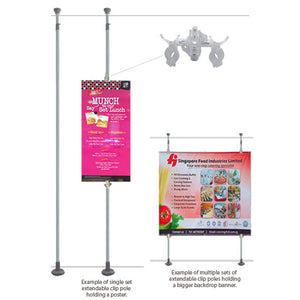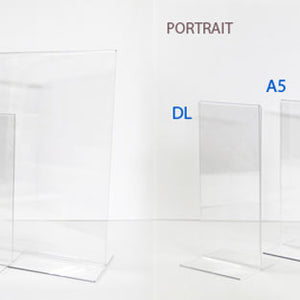Introduction
In the dynamic realm of marketing, interactive marketing has emerged as a pivotal force, reshaping the way brands connect with their audience. By seamlessly blending digital marketing and print advertising, interactive marketing fosters a two-way dialogue between businesses and consumers, resulting in memorable experiences that drive brand awareness and conversion rates. This article aims to delve into the intricacies of interactive marketing, offering insights into its transformative potential and providing a practical guide for marketers seeking to elevate their brand engagement and customer satisfaction.
Understanding Interactive Marketing
Definition and Benefits
Interactive marketing is a multifaceted approach that leverages the strengths of both digital and traditional marketing channels to create a holistic customer experience. By encouraging active participation, it transforms passive consumers into engaged participants, fostering a sense of involvement and ownership in the brand's journey. This level of interactivity not only enhances brand visibility but also builds lasting relationships that transcend a simple transaction.
Key Components
- Digital Platforms: Social media, email marketing, and mobile apps provide immediate and direct avenues for two-way communication, allowing brands to connect with their audience in real time.
- Physical Marketing Tools: Pull-up banners, QR codes, and augmented reality experiences bridge the physical and digital worlds, offering tangible interactions that leave a lasting impression.
- Integrative Strategies: The harmonious combination of digital and offline strategies ensures a seamless brand experience across all touchpoints, maximizing reach and engagement.
Case Studies: Bringing Interactive Marketing to Life
Airbnb – The Power of User-Generated Content
Airbnb, facing the challenge of scaling trust and brand awareness in a crowded travel industry, harnessed the power of user-generated content. By encouraging users to share their unique lodging experiences through images and stories on social media, Airbnb fostered a community-centric brand identity. This strategy led to a significant increase in organic reach and enhanced brand trust, resulting in a global boost in bookings.
Nike – Digital Transformation for Enhanced Engagement
Nike, seeking to maintain relevance in a digital-first market, launched mobile applications such as Nike Training Club and Nike Run Club. These apps offered personalized workout plans and community challenges, leveraging data analytics for tailored product recommendations. The result? Improved user engagement, millions of app downloads, and strengthened brand loyalty, ultimately driving sales and solidifying Nike's connection with its diverse consumer base.
Tesco – Virtual Stores, Real Results
Tesco faced the challenge of expanding its market presence in South Korea without the costly overhead of new physical stores. Their innovative solution? Virtual stores in subway stations, featuring life-sized billboards of store shelves and QR codes for on-the-go shopping via a mobile app. This digital innovation seamlessly integrated into commuters' daily routines, positioning Tesco as the top online grocery retailer in South Korea and significantly increasing its customer base and online sales.
Best Practices for Interactive Marketing Campaigns
AI and Personalization
-
AI in Content Creation: Marketers are increasingly turning to AI for content creation, with 43% using it for writing copy and creating images.
3
-
Personalized Ads: Ads tailored to individual preferences drive 30% more sales than non-personalized ones.
4
- Data-Driven Marketing: Emphasize data-driven strategies, as 82% of organizations have adopted a content marketing approach.
Social Media and Digital Engagement
-
Social Media ROI: Social media platforms like Facebook and Instagram continue to offer the highest ROI for marketing campaigns.
5
-
User-Generated Content: 86% of social media users prefer content created by their peers over influencer marketing.
6
-
Visual Content: Visual formats are 40 times more likely to be shared on social media, amplifying engagement and reach.
6
Metrics and ROI: Measuring Success
When it comes to interactive marketing campaigns, measuring success is crucial. Key performance indicators (KPIs) can include engagement rates, click-through rates, conversion rates, and return on investment (ROI). By tracking and analyzing these metrics, marketers can optimize their campaigns, allocate resources effectively, and demonstrate the impact of their interactive marketing strategies to stakeholders.
The Customer Journey: Enhancing Each Stage with Interactive Marketing
Interactive marketing is not just a tactic; it's a mindset that should permeate every stage of the customer journey. From awareness to consideration, purchase, and post-purchase, interactive marketing can elevate the customer experience and strengthen brand loyalty.
- Awareness: Interactive content, such as quizzes and polls, can engage potential customers and spark interest in your brand.
- Consideration: Providing interactive product demos or offering personalized recommendations through AI can assist customers in their decision-making process.
- Purchase: Facilitate a seamless and engaging purchase process through interactive features like augmented reality try-on experiences or interactive product configurators.
- Post-Purchase: Continue the dialogue with customers through interactive feedback surveys or exclusive access to online communities, fostering a sense of belonging and encouraging repeat purchases.
Future Trends: AI, AR, and Immersive Technologies
As interactive marketing evolves, artificial intelligence (AI), augmented reality (AR), and immersive technologies will play an increasingly significant role. These innovations offer unparalleled opportunities for personalized and immersive experiences that captivate and delight customers.
-
AI Integration: Marketers are already embracing AI for creative ideation, data-driven decision-making, and workflow automation.
7Ethical AI practices, emphasizing transparency and responsible innovation, will be crucial for gaining consumer trust.
-
Augmented Reality: AR is poised to revolutionize interactive marketing, delivering immersive and personalized experiences that blur the lines between the physical and digital worlds.
8
-
Immersive Technologies: Expect to see a surge in the use of virtual reality (VR), mixed reality (MR), and 360-degree video, offering customers memorable and captivating interactions with brands.
8
Budgeting: Cost Considerations for Interactive Marketing Campaigns
When planning interactive marketing campaigns, budgeting is a critical aspect. Costs can vary depending on the scope and complexity of the campaign, the chosen marketing channels, and the level of personalization involved. Here are some key cost considerations:
- Creative Development: Includes expenses for concept creation, design, and copywriting. More interactive and personalized campaigns tend to require higher creative development costs.
- Technology and Platform Fees: Utilizing specialized marketing platforms or AI tools often incurs license or subscription fees.
- Production and Distribution: Consider the costs of producing and distributing physical marketing materials, such as pull-up banners or direct mailers with interactive elements.
- Advertising Spend: Budgeting for advertising across digital channels, including social media and search engine marketing, is essential to ensure your campaign reaches the intended audience.
- Analytics and Measurement: Investing in robust analytics tools enables accurate measurement of campaign performance and provides actionable insights for optimization.
Conclusion
Interactive marketing is not just a passing fad but a fundamental shift in the way brands connect with their customers. By embracing the principles of interactivity, marketers can create dynamic and immersive experiences that resonate with their audience. Through the strategic integration of digital and print marketing, brands can enhance brand visibility, foster meaningful customer relationships, and ultimately drive business success. As interactive marketing continues to evolve, staying agile and adapting to emerging trends will be key to staying ahead in the ever-






















































































